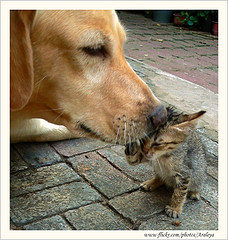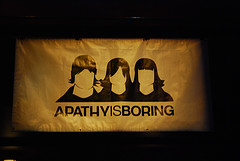 Sorry for the length, but this is an important post discussing evidence that we may be turning a corner civicly and starting to get re-engaged.
Sorry for the length, but this is an important post discussing evidence that we may be turning a corner civicly and starting to get re-engaged.
My colleague Robert Putnam has written about the devastating declines our nation witnessed in social capital in his landmark book Bowling Alone. As Putnam demonstrated and continued research proves, this social capital is vitally important to things like how well our schools and government works, how fast our economies grow, how happy and healthy we are, how safe our communities are. [For more on this read Bowling Alone, section III.]
It is interesting to note, given that backdrop, that we may well prove to be at an inflection point in our nation’s civic connectedness due largely to generational forces and the election of Obama. Obviously predictions are perilous, so it’s far too soon to announce “Mission Accomplished” on civic re-engagement, but here are some reasons to be hopeful.
Forces at work:
My colleague Bob Putnam uses the metaphor of a bathtub. Imagine that our national stock of social capital represents a bathtub. Each year 18 year olds are coming into this adult civic bathtub with their civic habits largely formed and each year we are losing (a mainly elderly) slice of America to the Grim Reaper. The relative difference between the civicness of the new 18 year olds and the folks dying each year represents an automatic civic change, even if no one changes their own civic behaviors.
For a long time, we’ve been losing each year one of the most civic slices of America (what Brokaw calls the Greatest Generation – folks born prior to 1931 – who have been throughout their whole lives way more civic). They gave more, joined more, gave blood more, voted more, trusted more, volunteered more, than the generations that came before and after them. And until the last 10 years, the folks coming into the bathtub were not very civic (they didn’t vote much, they didn’t trust much, they didn’t volunteer that much). Thus there was a cruel generational calculus going on that was persistently making America on average less civic and less connected, even barring any individual-level change with very hot civic water leaving the bathtub each year and being replaced by more lukewarm water.
There are now two important changes transpiring from a generational perspective. First, the Greatest Generation no longer exists in large numbers (percentage-wise). Thus we are entering into the period where a higher percentage of the folks we lose each year to death are the early Boomers, not the Greatest Generation. It is obviously a major loss that we don’t have the Greatest Generation around in the same numbers as a decade ago, but from the perspective of the civic bathtub, the average temperature of the civic water we’re losing each year has gone down.
And at the incoming end, the water entering the bathtub is heating up as well. The good news is that over the past 10 or so years, volunteering among young people has been going up. Some of this (maybe 1/3) is “mandatory” service (required to graduate from middle school or high school) or service to burnish resumes for college. But the motivations don’t matter all that much. Researchers have found that those who volunteer at a young age are likely to do so throughout their whole lives, regardless of why they initially volunteered.
Since Sept. 11, we’ve witnessed an increase in political interest and voting among American youth who were at or near college at the time of 9-11. We’ve written about these changes in “Sept. 11 as Civics Lesson” describing a new “9-11 Generation” forming. Since we don’t know about voting behavior until youth reach age 18, it’s impossible to know whether 9-11 shaped the political behavior of children who were as young as ages 8 or 10 when the Twin Towers fell, but so far the trends are encouraging. For example, interest in politics among college freshmen was down almost monotonically for 35 years from the early 1960s to 2000 and has turned up almost every year since 2001 (in the UCLA American College Freshman Survey)
2. Barack
Enter Barack Obama (force #2). Some in the press have indicated that Obama created this political upsurge. We don’t think the data support this view. Barack Obama is a remarkably impressive man who we had the pleasure of working with on Saguaro, and he is highly charismatic. But Bob Putnam has noted that although Obama was a match in igniting young people, there was an underlying stock of dry kindling among youth (their pent up interest in politics) waiting to be lit.
The Obama Campaign was a masterful strategy of engaging Americans. I mentioned in an earlier post how it was a great combination of high touch and high-tech and Obama’s intention in the campaign was to take community organizing to national level. He trained thousands of local organizers, engaged millions of new Americans in politics, as volunteers, as donors.
Not all of these were young Americans, but a disproportionate number were. For example:
-
The biggest increases in primaries and general election appear to be among 18-29 year olds; and
-
Moreover, these volunteers and supporters have the high of a success, for many coming on their first engagement experience.
We think the Obama campaign and administration will influence our civic trajectory in at least four ways:
a) The Obama campaign has built up a network of 13 million e-mails of supporters. This is a tremendous potential asset in our nation’s civic re-engagement if it gets effectively used in the future, but it is a $64,000 question about how this should and can be done. Should it be done top down or bottom up? Should it become a new non-profit? Should it be part of the Democratic Party? Will it be a one-way street (for the Obama Administration to mobilize foot soldiers) or a two-way street? Will it be independent enough to criticize the Obama Administration? Some are not waiting for the Obama leaders to define its post-election character and taking action into their own hands (such as, MoveOn “Real Voices for Change” post-election house parties, Nashville Community Organizers Meetup group, Nations for Change, GroundUp (CT for Obama), Wisconsin Field Hands). We saw this earlier in the campaign when the network started to mobilize when Obama switched positions to support FISA, which has led to Get FISA Right. It is a hopeful sign that Obama has permitted dissension on his Change.gov site about Obama’s choice of evangelical preacher Rick Warren to give the inauguration convocation.
There is a very good summary at TechPresident by Micah Sifrey about the current state of play on this network of activists, or what is called “OFA2” (Obama for America 2). Some sites are even using “crowd sourcing” to try to set agendas for the Barack Administration (set up by the campaign) or this alternative agenda crowdsourcing site.
One trivial example of how this network might be used came recently when Obama’s campaign manager suggested to the e-mail list that if they are concerned about Barack’s girls’ choice of a White House “first dog”, they should get involved with animal shelters. (The e-mail read: “Excited about the much anticipated first dog? Support your local animal shelter to give animals in your area a chance.”) Some criticized this approach as too small-bore, but the general approach might have great merit. Think of something like Net Day applied to multiple issues over the course of a year.
b) Bully pulpit: Barack will have many opportunities as President in ways big and small to show the importance of service and caring for others and this will have an impact. Whether it is signaling that his girls will have to make their beds in the White House, or telling Detroit’s 3 CEOs that they should forego salary, or giving blood, or working on a volunteer project, or telling us how we need to sacrifice to cut back on global warming.
[Postscript: as one trivial example of this, Obama’s use of USAService.org and self-example of painting a homeless shelter doubled the number of Americans in service on MLK Day from 500,000 to over a million.]
c) Given Barack’s own background, one can assume that his policies will be more social capital friendly. The government spends well over $2.5 trillion every year, dwarfing the expenditures of non-profits. How those dollars are shaped could have enormous difference in our civic patterns. The potential examples are almost limitless; imagine if more national spending went to:
-
Integrating immigrants through social organizations, learning English in groups with immigrants or non-immigrants;
-
Anti-crime efforts that focused more on neighborhood networks;
-
Public health efforts that focused on getting individuals into social networks and groups;
-
Putting more of the educational dollars into promoting civic values in schools, teaching civic skills and knowledge and ensuring that all students engage in service learning in groups with meaningful reflection;
-
Increasing opportunities for intensive national service after high school, with a GI-like Bill component that in turn opened up educational opportunities for those who served;
-
Using neighborhood networks and knowledge for homeland security; or
-
Ensuring that more of the funding for the arts went to foster community engagement or the bridging of disparate social groups.
d) Transparency and civic engagement in the process. The Obama Transition Team has a working group looking at Technology, Innovation and Government Reform. It’s too soon to know what they will suggest and whether they can get Congress to go along. Although he has said he will not sign any bill until Americans have had a chance to comment on it, I’m not sure that is practical or meaningful. And certainly the risk is that unless the public can see a dispassionate distillation of these comments, Obama Administration officials may pick and choose the friendly comments. But for sure, many think that we have inherited a citizen-participation scheme of government that is badly broken (few if any come to government hearings) and it certainly doesn’t use the best of open source technology or the Internet. Imagine if there were lots of channels for citizens to participate, and citizens could choose the paths that represented their best expertise and highest interest. One such example is Peer-to-Patent where citizens can provide their expertise to review whether inventions are patentable based on “prior art”. Citizens could be used to provide greater expertise in local budgeting (as done in Ipatinga, Brazil) or in holding government accountable or in figuring out policy answers to tough questions (as was done in British Columbia in evaluating the right parliamentary voting process through the use of a citizen jury). But in this process of getting citizen participation we must be able to separate, as Clay Shirkey has noted, the franchise from passion or interest. In our voting system, one gets one vote no matter how passionately one cares about an issue. If commenting and voting systems don’t identify or track participants they risk being gamed: in the way that Ataturk became TIME’s leading vote getter for Man of the Century or that “legalization of marijuana” rose to the top of the list of issues the new Obama Administration should address at Change.Gov. The issue, as Clay points out, is whether a well organized minority can out-maneuver and less well organizers majority.
3. Technology
I don’t think we’ve figured out how best to use technology to foster social capital and civic engagement, although the Obama campaign as I indicated was a masterful combination of high touch and high-tech (using technology to enable people to figure out whom among their friends lived in battleground states and hence whom they should call, using texting to link people to campaign events). For sure, technology will need to play in a key role in the fourth path above: liberating citizens to play a more active role in governance and accountability.
We’re too early on in the life of the Internet in to know what the technology answers to our patterns of civic disconnection will look like or even if they will emerge (although there are some encouraging signs like Meetup or Craigslist or potentially some of the merging of cellphones with locational awareness to activate and strengthen weaker social ties, like with Helio Beacon Buddy or Loopt). For sure lots more tweaking, innovation and experimentation is necessary.
But technology is a useful ace in the hole, even if it doesn’t start driving solutions yet.
Generational forces are tough when you are working against them and a boon when they are working with you: imagine running into a headwind vs. running with the wind at your back.
If the generational changes (referred to earlier) start to stabilize our stock of social capital and even begin moving us in a positive direction, and the Obama administration, both in their spending and in their moral signaling, raise the profile and importance of social connectedness and sacrifice, technology could be the after burner that gives additional thrust to a period of civic re-engagement, both through participation in governance and outside of government.
This won’t happen on its own, but it is a distinct reality with your concerted attention and the attention of thousands others like you.
For an in-depth look at some of civic engagement of the Obama volunteers and how they consciously deepened volunteers engagement, see the National Journal piece “Community Organizer In Chief: The success of the Obama campaign is a sign that civic participation is on the rise again after decades of decline”. [This also describes some of the history of civic organizations over the last 100 years.] Also see Zack Exley, key online organizer of the Howard Dean campaign and a former union organizer, who had this interesting post “The New Organizers: What’s Really Behind Obama’s Ground Game” in the Huffington Post (October 8, 2008)









